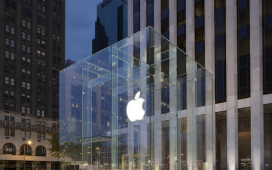Apple (NASDAQ:AAPL) may have sidestepped the harshest blows from the latest round of Trump tariffs, but the pressure is mounting. While smartphones, computers, and semiconductors have been spared from the 145% reciprocal tariffs on Chinese imports, investors aren’t celebrating. Apple shares are already down 22% this year, and analysts say exemptions alone won’t reverse the broader slowdown. JPMorgan’s Samik Chatterjee noted that weaker demand across both the U.S. and Chinatwo of Apple’s most critical marketsis likely to keep revenue under pressure, regardless of temporary tariff relief. The bottom line: margin stability is helpful, but it’s not enough to reignite growth.
What’s really at stake is Apple’s ability to rewire its global supply chainand that’s not happening anytime soon. Former Intel (NASDAQ:INTC) CEO Pat Gelsinger calls the problem sedimentation, where decades of manufacturing ecosystems have built up around production centers in Asia. These networks don’t shift just because Washington wants them to. They shift when there’s capital, scale, and long-term incentives. Apple’s $500 billion U.S. investment pledge, largely aimed at boosting AI infrastructure, conveniently leaves out any mention of bringing iPhone or Mac production home. That’s not an oversightit’s a signal.
Treasury Secretary Scott Bessent, however, isn’t buying Apple’s long-standing argument that the U.S. lacks the workforce to build its devices. You don’t need a PhD to assemble an iPhone, he said in a recent interview. The bigger issue, for investors, is whether Apple has the willand strategyto localize production before trade tensions escalate again. For now, the company is buying time. But the costs of delay, both political and financial, may come due faster than Wall Street expects.
This article first appeared on GuruFocus.






